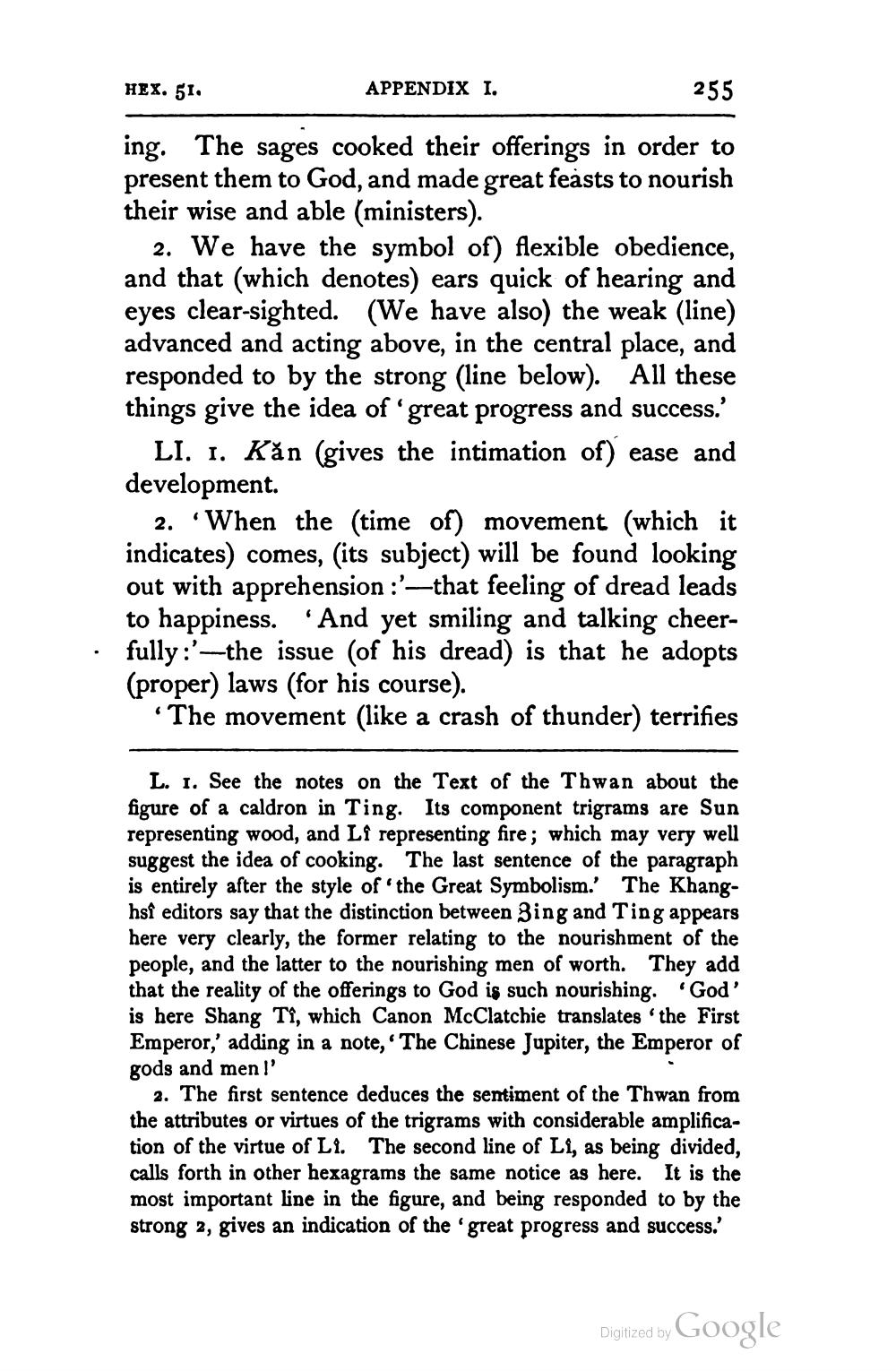________________
HEX. 51.
APPENDIX I.
255
ing. The sages cooked their offerings in order to present them to God, and made great feasts to nourish their wise and able (ministers).
2. We have the symbol of) flexible obedience, and that (which denotes) ears quick of hearing and eyes clear-sighted. (We have also) the weak (line) advanced and acting above, in the central place, and responded to by the strong (line below). All these things give the idea of great progress and success.'
LI. 1. Kån (gives the intimation of) ease and development.
2. When the time of) movement (which it indicates) comes, (its subject) will be found looking out with apprehension :'—that feeling of dread leads to happiness. And yet smiling and talking cheerfully:'--the issue (of his dread) is that he adopts (proper) laws (for his course).
The movement (like a crash of thunder) terrifies
L. 1. See the notes on the Text of the Thwan about the figure of a caldron in Ting. Its component trigrams are Sun representing wood, and Li representing fire; which may very well suggest the idea of cooking. The last sentence of the paragraph is entirely after the style of the Great Symbolism.' The Khanghsî editors say that the distinction between Zing and Ting appears here very clearly, the former relating to the nourishment of the people, and the latter to the nourishing men of worth. They add that the reality of the offerings to God is such nourishing. 'God' is here Shang Ti, which Canon McClatchie translates the First Emperor,' adding in a note, 'The Chinese Jupiter, the Emperor of gods and men!'
2. The first sentence deduces the sentiment of the Thwan from the attributes or virtues of the trigrams with considerable amplification of the virtue of LI. The second line of Li, as being divided, calls forth in other hexagrams the same notice as here. It is the most important line in the figure, and being responded to by the strong 2, gives an indication of the great progress and success.'
Digitized by Google




